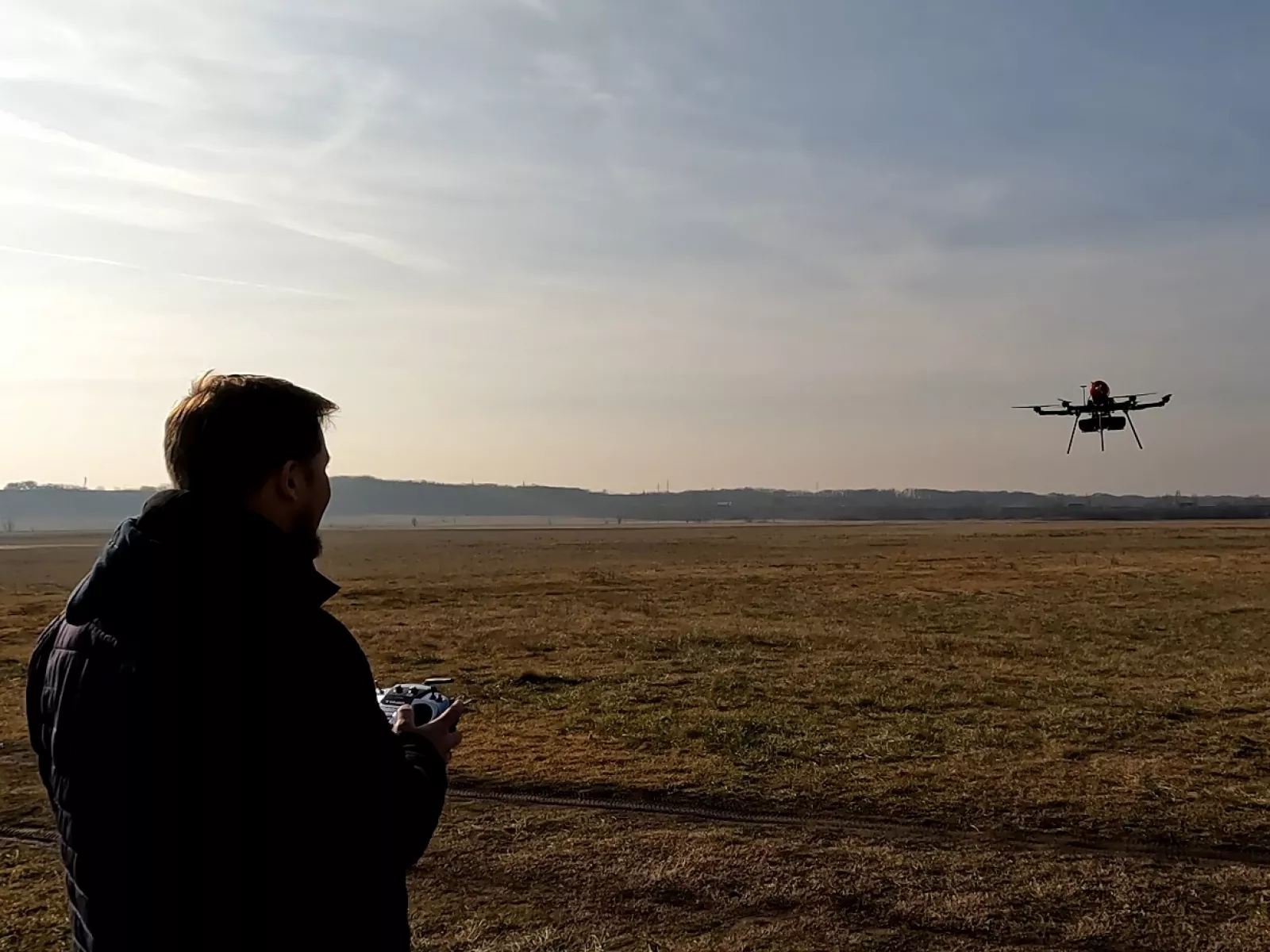
The hydrogen-fueled drone is one of the first few fuel-cell flying devices within Hungary.
Bálint Vanek, ARNL researcher and deputy director of SZTAKI, shared a video of the test flight. The research project also involved Linde Hungária, the Hungarian Hydrogen Technology Association and the Ventus-Tech Ltd..
"Hydrogen is one of the most promising fuels of the future, but there are still significant challenges ahead before we can use it routinely. The device developed under the Hydrogen-Powered, Cooperative, Driverless Remote Sensing Devices and Associated Data Processing Framework research project of the NRDI's Thematic Excellence Programme (TIP) can fly for 90 minutes compared to the 30-minute flight time of a lithium battery drone of the same size.
This means that the processing of the large amount of data generated on board has to be partly carried out on board during the flight, rather than on a desktop workstation after the flight.
A non-trivial challenge is to optimise the control of the hybrid propulsion system in a way that it saves fuel. The fuel cell should be operating at the optimum working point at all times.
In addition to the research challenges, the project team had to overcome the difficulty that no similar. i.e., 300 bar, hydrogen cylinder system has ever been filled up within Hungary, so we could carry out the first flight safely in close cooperation with Linde Hungaria," said Bálint Vanek.
A video of the drone test flight can be seen below.